Showing 805–816 of 1187 results
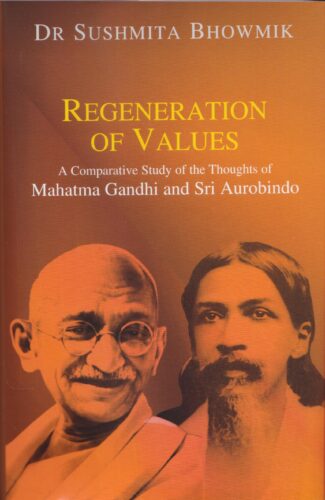
This volume makes a comparative study of the different values and approaches, philosophized and propagated by Mahatma Gandhi and Sri Aurobindo not only for the social, moral, political and spiritual life of Indians, but also for the benefit of the entire mankind.
Regeneration of Values: A Comparative Study of the Thoughts of Mahatma Gandhi and Sri Aurobindo reflects upon the different concepts of social, moral, political and religious values philosophized and propagated by Mahatma Gandhi and Sri Aurobindo.
Both these two great thinkers of nineteenth-twentieth century India tried to reconstruct the social, moral, political and spiritual life of the entire mankind through the revival of the ancient social and cultural values of India. However, the means adopted by them towards such regeneration of values were different in many respects. Here an attempt has been made to make a comparative study of their concepts of the different values as well as the approaches taken by them.

The authors through this book have tried to ignite wisdom and one’s passion for “relationship” so that one may make his/her life more meaningful. It contains hundred thoughtful, mind-blogging, fabulous quotations on “relationship”. Each of these accompanies a stimulating painting of Lord Ganesha, the Lord of Peace, Prosperity and Wisdom, representing its theme. Some of them are from famous personalities, who have impacted the world with their wisdom and mission. In the fast-moving metro lifestyle, people quite often neglect relationships, especially interpersonal relationships. It, at times, challenges the very existence of their family life.
Life sans relationship is impossible. Whatever be the nature of relationship individuals, groups, organizations, societies and nations success of a person is being measured by the kind of relationship he/she has with the elements of the world. Striking the right cord is the centricity of a relationship. And to have it, one has to constantly manage the varied links through out his/her life.
The authors through this book have tried to ignite wisdom and one’s passion for “relationship” so that one may make his/her life more meaningful. It contains hundred thoughtful, mind-blogging, fabulous quotations on “relationship”. Each of these accompanies a stimulating painting of Lord Ganesha, the Lord of Peace, Prosperity and Wisdom, representing its theme. Some of them are from famous personalities, who have impacted the world with their wisdom and mission. In the fast-moving metro lifestyle, people quite often neglect relationships, especially interpersonal relationships. It, at times, challenges the very existence of their family life.
Life sans relationship is impossible. Whatever be the nature of relationship individuals, groups, organizations, societies and nations success of a person is being measured by the kind of relationship he/she has with the elements of the world. Striking the right cord is the centricity of a relationship. And to have it, one has to constantly manage the varied links through out his/her life.

The volume speaks about the civilisational dimensions of religion and culture in India, unity and diversity of Indian civilisation, idea of civilisation, ecological crisis in the modern world, relationship between tribal and non-tribal religions, religious philanthropy, Christian influence on Hindu way of life in India, and concept of composite culture of India.
The volume deals with the civilizational dimensions of religion and culture in India. It underlines the point that religion and culture are important elements of all civilizations but it is their interplay that has given a unique feature to Indian civilization.
The essays interrogate the various western sociological discourses on civilization and articulate the alternative conceptualizations available in Indian sociology. They underline the unity and diversity of Indian civilization, present the idea of civilization as conjoined with the idea of civil society and study the ecological crisis in the modern world. They focus on the dialogical relationship between tribal and non-tribal religions, link between religion and environment, religious philanthropy and Christian influence on Hindu way of life in India. They also delve into the concept of composite culture in India, scrutinising aspects of folk religion and cultures to show, for instance, how art forms get accumulated into the idea of culture.
The volume will be of immense interest to a variety of scholars and students associated with the study of Indian religion and culture.

This, an authorised reprint of an annual bulletin of the Indian Archaeological Society, has been offering valuable informations, full with rich insights and innovative viewpoints, on the Indian archaeology that includes excavations, inscriptions, temples, mosques, iconic symbols, paintings, etc. This yearly bulletin is highly recommended for archaeologists, epigraphists, historians and research scholars besides the general readers having interest in such fields.
Ancient Indian polity took a new turn with the emergence of republics in the post-Vedic age. The history of republics covers the period from the age of the Mahabharata to the fourth century AD. Dr. G.P. Singh here comprehensively, yet incisively, studies the rise, growth and fall of republics in ancient India during the period. He has also dwelt upon the rise and expansion of kingdoms and growth and decline of towns, cities and various urban centres in different parts of the Indian subcontinent at length. The work traces the pattern and functioning of republican governments at the time of the Buddha (sixth and fifth centuries bc) Panini (fifth century bc), Kautilya (fourth century bc), Alexander (327-325 bc), the Mauryas (321-184 bc) the Sungas (184-72 bc) and the Guptas later. The research is based on the indepth study of the epics, the Puranas, and Buddhist and Jaina sources which are supplemented by Greek and Roman writings, Sanskrit literary evidence and epigraphic & numismatic discoveries. It delves deep into modes of expansion of territories, factors leading to urbanisation and urbanisation patterns, and town planning. It presents a picturesque description of the urban centres of north-western India primarily based on Greek and Latin sources and pays special attention to dates related to founding of republics and cities, their extent, their functioning as administrative and religious centres, the problem of their identification and references to them in works, and their place in the wider framework of ancient Indian polity. The book will be useful to scholars and students interested in the study of ancient Indian polity and urban history.

The book logically demolishes some widely-prevalent Puranic myths, focussing on eight celebrated men of remote historical past: Visvamitra, Parasurama, Bhagiratha, Rama, Vyasa, Krsna, Yudhisthira and Valmiki whose real characters have been shrouded in mythologisation.
Did Rama banish his wife Sita? Did Krishna have Radha for his companion? Was Shakuntala Vishvamitras daughter? Could Bhagiratha bring about the Gangas descent from heaven? Or, was Vyasa really the author of the traditional eighteen puranas? Addressing these and other similar questions, Dr. Bhargava retrieves historically valid answers from the maze of Puranic myths notwithstanding their deeply entrenched contradistinctions in the Hindu psyche. As a well known genre of Sanskrit literature, the Puranas, besides giving an account of the creation and the dissolution of the universe and the ages of Manus (the ancestors of mankind), also list the genealogies of Aryan kings and rishis, and the life stories of famous persons. They have accordingly lent to ancient Hindu lore a most remarkable air of veracity. The historicity of these personages is evident from the fact that the names of many of them occur in the Vedic literature also, which is much older than, and quite independent of these Puranas. A systematic, critical, and comparative study of the Puranas and the Vedic literature, as well as of other time- honoured literary sources conducted in this book makes it possible to discredit the myths that have grown around the names of many great men and women of ancient India. The book logically demolishes some of the widely-prevalent Puranic myths, focussing on eight celebrated great men of remote historical past: Vishvamitra, Parashurama, Bhagiratha, Rama, Vyasa, Krishna, Yudhishthira, and Valmiki whose real characters have been shrouded in the mist of centuries of mythologization. The author has demonstrated that when shorn of all myths, the real greatness of these men is fully revealed. A widely acclaimed work, Retrieval of History from Puranic Myths is now in its second, revised edition.

The book explains Samkhya philosophy through expositions/ interpretations of Samkhya works and authors. Tracing Samkhyas growth from sage Kapilas time to fifth century ad, it highlights various interesting aspects of Samkhya tradition.
Samkhya is the oldest among Indian philosophies. Rather, it had for long been synonymous with philosophy itself. Over the centuries, it has influenced all other Indian schools: orthodox and unorthodox. At its metaphysical plane, Samkhya is dualistic realism holding out the doctrine of two ultimate realities: prakrti (matter, physical world) and purusha (self, spirit). As a time-honoured tradition, Samkhya has, at its base, a long line of complex, often baffling expositions/commentaries/inter-pretations. Which, authored by ancient thinkers and sages, gave it both varied meaning and content. The earliest available work in this line of writings is Ishvarakrishnas Samkhyakarika (fifth century AD) a standard classic celebrated for crystallising the whole Samkhya thought of its times. Ishvarakrishnas work, however, has not only overshadowed all earlier expositions, but also led modern scholarship to mistakenly view the beginnings of Samkhya philosophy with nothing beyond Samkhyakarika. Professor Lallanji Gopal here dispels this and other widely-prevalent misconceptions. The book reconstructs anew the pre-Ishvarakrishna history of Samkhya. And also, for the first time, evolves a chronological sequence of all its landmark works and their authors. Meticulously tracing the historical development of Samkhya thought: from its genesis with the legendary Kapila to its standardised formulations in Samkhyakarika, Professor Gopal shows how Samkhya has never been a monolithic system, nor has its growth been unilinear; how it has had an interesting history of changes, vital shifts, introduction of new details, debates, and even polemics; and, finally, how Ishvarakrishnas work is the culmination of classical Samkhya, and not its beginning as most modern scholars have come to believe. Authenticated by an astonishing mass of literary sources, the book is bound to fascinate scholars and discerning readers alike.
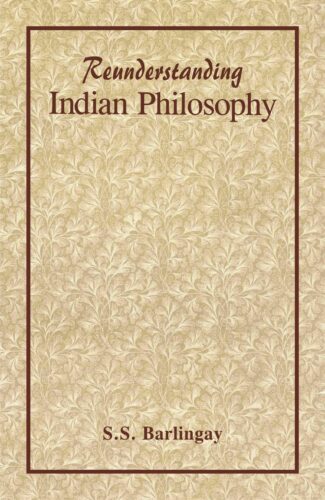
The book discusses the problems raised by the classical systems like Carvaka, Jain, Buddhism, Nyaya, Vaisesika, Samkhya, Yoga, Purva Mimamsa and Vedanta. It establishes epistemological, metaphysical and axiological significance of Indian philosophy, offering a unique insight.
What is Philosophy? Is it determined by any geographical boundaries? Does it emerge out of cultural patterns of the society? With such and other basic questions Prof. Barlingay analyses the concepts theories and trends in philosophy as they have developed in our sub-continent over the ages. Although this account of philosophy is called Indian he emphasises that the issues discussed by the ancient and medieval philosophers are essentially abstract and there is nothing Indian about this philosophy exclusively. Moreover, the understanding of Indian philosophy that has emerged in the past two centuries owes its direction and commitment to Indologist of Western orientation. Prof. Barlingays aim is to overview the Indian philosophy as presented by ancient and medieval philosophers and not the re-routed interpretation. Hence, he refers to it as a Re-Understanding. In this challenging endeavor Prof. Barlingay has discussed in-depth and critically the basic issues and problems raised by the orthodox and unorthodox systems like Carvaka, Jain, Buddhism, Nyaya, Vaishesika, Samkhya, Yoga, Purva Mimamsa and Vedanta. The book is replete with his logical reasoning. Within its anthropological context the author establishes a epistemological, metaphysical and axiological significance of the Indian philosophy offering the reader a unique insight in the subject.
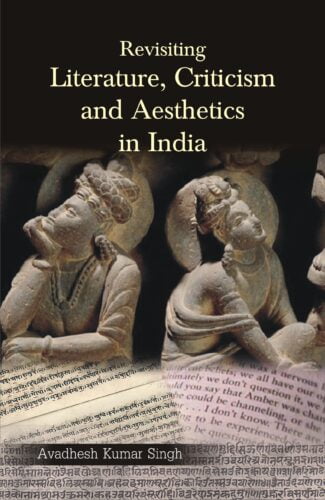
The book objectively revisits the widely discussed issues pertaining to colonialism, post-colonialism, literary criticism and aestheties in India and not only critiques their constructs but also comes up with alternative constructs in the backdrop of Indian realities as manifested in creative and critical terms.
The declining decades of the 20th century witnessed discussion of various issues pertaining to colonialism, postcolonialism, literary criticism and aesthetics in India. The present book in its four parts Word, World and Perception, Colonialism and After, Literature and Theorizing in India, and Criticism and India deals with them and ancillary issues; and in the process of revisiting them not only critiques their constructs but also proposes alternative constructs in the context of Indian realities and their manifestations in creative and critical terms.
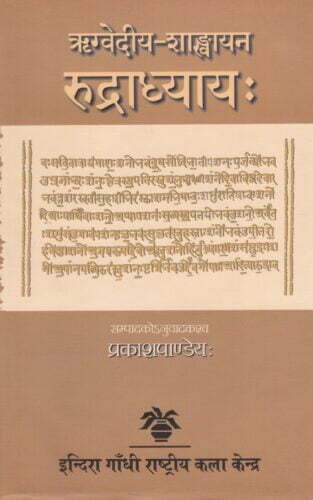
This book contains the rare Rudradhyaya of the Shankhayana Sakha of the Rigveda which has been preserved and recited by the Nagara brahamanas of Banswara district in southern Rajasthan. This edition gives an exposure to the most superior form and tradition of recitation, since till only Rudradhyaya of Shakala tradition was available in print now.
During Shiva worship, Nandi worship and other Shaiva rituals, the recitation of Rudradhyaya has been essential in both Shrauta and Smarta traditions. Any person reading and reciting traditionally a particular branch of the Vedas should also necessarily recite the particular Rudradhyaya as assigned to that particular branch.
Till today only Rudradhyaya related to the Shakala Samhita of the Rigveda was available. For the first time a Rudradhyaya from Rigveda of Shankhayana Shakha, which has been preserved and recited by the Nagara brahmanas of Baaswara district, in southern Rajasthan is being published.
This edition of Rudradhyaya is superior in many aspects than the ones available earlier as this gives an exposure to the most superior form and tradition of recitation.

This interesting compendium highlights the importance and stature of women Rishikas in the Vedic literature as epitomes of spiritual attainments, and emphasises that the gender discrimination as seen in the Hindu traditional thought was a later phenomenon. It provides a list of women Rishikas and mantras envisioned by them.
The volume presents a study of the famous women Rishikas mentioned in the Vedic literature.
The book describes the great respect offered to seers in the Vedic literature and the equal importance given to Rishikas when compared to Rishis. Discussing how even women of the Vedic period were epitomes of spiritual attainment, the book admiringly points out that the gender discrimination seen in the Hindu traditional thought was a later phenomenon (such as that women are not adhikaris for the study of the Vedas). It states that there are twenty-seven women mantra-drashtarah in the Rigveda. It provides a list of these women Rishikas and deals with the mantras envisioned by them. The Rishikas are mentioned in the study on the basis of those who praised the deities, those who conversed with the seers and deities, and those who praised the self. The Rishikas mentioned in the Yajurveda, Samaveda, and Atharvaveda are also mentioned. Rishikas whose individual contributions are taken up in detail include Vagambhrni, Surya-Savitri, Shraddha, Daksina, Aditi, Ratri, and Urvashi, among others.
The volume is bound to be a handy reference book for all those interested in Indology, particularly students and scholars of Vedic and gender studies.

It looks into specific cultural formation of Teyyam. It re-frames and interprets various myths of mother-goddesses and hero-deities by situating them in the historical conditions in which they originated and explores from a sociological perspective how the ritual functions as ideology.
Teyyam, the spectacular ritual dance widely performed in north Kerala, has its distinct forms of visual and verbal expression. However, what was once expressed through the distinctly indigenous forms of this religious other no longer remains the same, as the specificities of meaning and messages as encoded in the whole structure of its ritual performance were levelled out and superceded by the ideological laundering of caste Hinduism. RITUAL AS IDEOLOGY looks into the specific cultural formation of teyyam it re-frames and interprets various myths of the mother-goddesses and hero-deities by situating them in the historical conditions in which they originated. Based on a study of the myths at a micro-structural level, the book explores from a sociological perspective how the ritual functions as ideology, apart from its cultic or religious significance. The study also unfolds and explains the gender disparity between the archetypal Female Devourer and her Male Victims, the recurrent motifs in the myths related to various manifestations of the Terrible Mother in teyyam. The study thus acquires contemporary significance in the face of cultural authoritarianism that in its design of appropriation attributes the village pantheon of every little tradition to canonical Hinduism, a process that has been so rife in todays cultural politics.
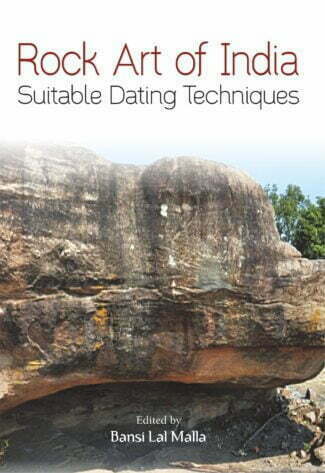
The present volume mainly emphasizes on a long due and much discussed and burning issues like that of what will be the Suitable Dating Techniques for Indian Rock Art. It includes not only new insights but also new dating results.
Rock art is a vital archaeological source to study and analyse the cognitive evolution of the human intellect across the world. The importance of rock art and its dating has long been a key issue of rock-art research and continues to be attended by difficulties about methodology, misinterpretation of findings and overconfidence in the reliability or precision of results. Most of the rock-art researchers primary focus in their investigations for rock-art dating at present has been to establish chronologies of different rock-art sites.
The present volume mainly emphasis on long due and much discussed issues like that of what will be the suitable dating techniques for Indian rock art. Some of the topics in the volume cover different dating methods such as the minimum dating by archaeological excavation, radiocarbon analyses of mineral accretions or their inclusions, radiocarbon analyses of paint residues or their inclusions, geomorphological methods, minimum or maximum ages derived from biological accretions, lichenometry, colorimetry of patinae, radiocarbon analyses of charcoal and beeswax figures, and any other methods of direct dating of rock art. This volume includes not only new insights but also new dating results. The data and interpretations put forward by various scholars are comprehensive and analytical. Most of their views are appropriate and hold promise in terms of recent trends in dating rock art.
| There are no products |